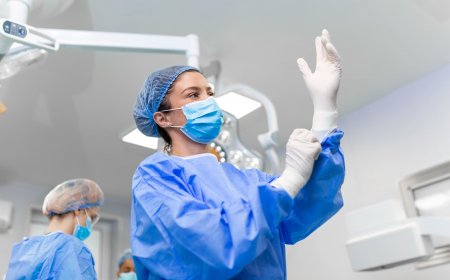Laparoscopic Surgical Robot for Pediatrics First loading

January 16th, 2024 - Asensus Surgical (NYSE: ASXC), a U.S.-based laparoscopic surgical robotics company, announced that it has entered into a surgical robot lease agreement with Nagoya University Hospital in Japan.
Founded in 2006 and headquartered in North Carolina, USA, Asensus Surgical is a surgical robotics and surgical digitization company with products that have received regulatory approval in the United States, Europe and Asia.
Nagoya University Hospital (NUH) is an internationally renowned medical institution located in Nagoya, Japan. The hospital is part of Nagoya University and is closely linked to the University's Faculty of Medicine, making it one of the largest medical institutions in Japan. The Nagoya University Medical Faculty Hospital offers comprehensive medical services in a wide range of departments, including internal medicine, surgery, pediatrics, obstetrics and gynecology, ophthalmology, otorhinolaryngology, dermatology, and psychiatry. The hospital also has a state-of-the-art diagnostic imaging center, laboratory and pharmacy.
Senhance System Used in Pediatrics for the First Time in Japan
At the end of December 2023, the Department of Pediatric Surgery at Nagoya University Hospital rented and used Asensus Surgical's Senhance® surgical robotic system. This is the first robotic system installed in Japan specifically for pediatric surgery, and the fourth to be installed worldwide in 2023.
The Senhance system is uniquely suited to meet the needs of pediatric surgeons, who strive to use minimally invasive instruments and endoscopes while maintaining a high degree of precision and stability in pediatric surgery due to the small size of their patients.
The Senhance Surgical Robotic System has been carefully designed to meet the specific needs of pediatric surgery, according to Anthony Fernando, president and CEO of Asensus Surgical. The Senhance system utilizes its specialized instrumentation and advanced clinical intelligence to deliver high-quality care to pediatric patients. It uniquely reduces the invasiveness of surgery and improves surgical precision. The Senhance Surgical Robotic System has been successful in a variety of pediatric surgeries in Europe and the United States.
Dr. Hiroo Uchida of the Department of Pediatric Surgery, Nagoya University School of Medicine, also spoke highly of the Senhance system. He said that the Senhance system provides a valuable solution for pediatric surgery. Designed with smaller patients in mind, the Senhance System's reusable 3-millimeter instruments offer distinct advantages. He also mentioned that based on their hospital's experience with laparoscopic surgery, the Senhance system is very adaptable, for example, with its intuitive sensory camera controls and haptic feedback with critical safety features.Dr. Uchida also stated that they believe the Senhance system provides economic value, which is an important step forward for the hospital's goal of providing optimal care for young patients. An Important Step.
Senhance System Surgical Features for Pediatrics
The Senhance Surgical Robotics System is an advanced robotic-assisted surgical system with design and functionality specifically suited for pediatric surgery, which improves surgical precision and safety, as well as the efficiency of the surgeon and the speed of recovery for pediatric patients.
Key Features:
1. High-precision operation: Senhance has been designed with a 5mm camera range, haptic feedback, and eye-tracking camera control features to provide high-precision surgical operations, which is especially important for pediatric surgery, which often involves smaller anatomical structures and smaller surgical incisions.
2. 3D Visualization: The Senhance system is equipped with a 3D high-definition vision system that provides clear, detailed surgical views to help surgeons better identify and manipulate anatomical structures during pediatric surgeries.
3. Haptic Feedback: The Senhance system is equipped with a haptic feedback function that allows the surgeon to feel the pressure and resistance of the surgical tools during the operation. This is especially important for pediatric surgery as it helps the surgeon to better control the surgical tools and avoid excessive pressure on the fragile tissues of the child.
4. Minimally invasive surgery: The Senhance system allows for high-precision, minimally invasive surgery, which can reduce surgical trauma, shorten a child's recovery time, and reduce post-operative pain.
5. Improved Surgical Efficiency: The Senhance system can improve surgical efficiency and reduce surgical time, which is especially important for pediatric surgery, where children often have difficulty remaining still for long periods of time.
In March 2023, the Senhance surgical robotic system received 510(k) clearance from the FDA for pediatric indications, making Senhance the first and only digital laparoscopic surgical system for use in children. The system's 3mm instruments are the world's smallest surgical robotic platform, and these instruments are reusable.
Prior to this, the Senhance surgical robotic system has been approved in the EU and Japan for pediatric patients with 3 years of surgical experience.
In October 2023, Asensus Surgical said in a regulatory filing that Mayo Clinic is already using its Senhance Surgical Robotic System for pediatric surgery. This is the first system available exclusively to pediatric surgeons in U.S. hospitals, demonstrating the unique suitability of Senhance for pediatric applications.
Senhance Surgical Robotic System
The Senhance Surgical Robotic System is an advanced medical device that utilizes a multi-port design that allows for the simultaneous control of up to four robotic arms and a camera. This design allows the Senhance system to control a variety of instruments during laparoscopic surgery and perform a variety of endoscopic maneuvers including grasping, cutting, dissecting, ligating, electrocautery, suturing, mobilization and retraction.
The Senhance system's optical sensors allow the surgeon to select commands and move the camera through eye movements, thereby increasing the surgeon's flexibility and agility in viewing the surgical field during the procedure. In addition, the Senhance system provides haptic feedback based on the pressure and tension of the instrument on the tissue, allowing the surgeon to more accurately control the surgical procedure.
The Senhance surgical robotic system is also equipped with an ultrasound device that can be used to cut or close different tissues, thereby minimizing the thermal impact on surrounding tissues and reducing bleeding and trauma to surrounding tissues.
The Senhance Surgical Robot has some unique advantages over the da Vinci robot for minimally invasive surgical procedures. For example, the surgeon can sit in front of a 3D imaging screen and perform the procedure by maneuvering the three arms of the Senhance robot, whereas the da Vinci robot has not yet achieved a true 3D imaging view and requires the retention of four arms. In addition, Senhance has a force feedback sensory feature that provides feedback to the surgeon based on the stiffness of the tissue or organ, which adjusts the force of the arm manipulation, something the da Vinci robot lacks.
In 2021, Asensus Surgical also introduced a 5-millimeter diameter articulating instrument that has received FDA 510(k) clearance. This new instrument further enhances the surgical capabilities of the Senhance Surgical Robotic System by providing two additional degrees of freedom for better access to hard-to-reach areas of anatomy.
What's Your Reaction?












































